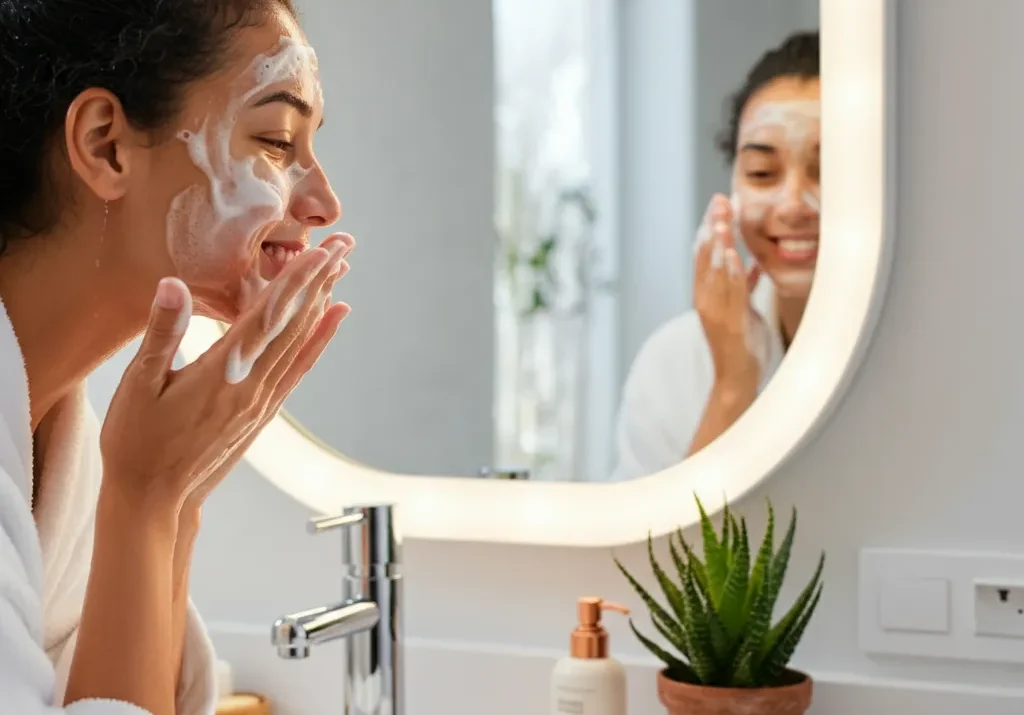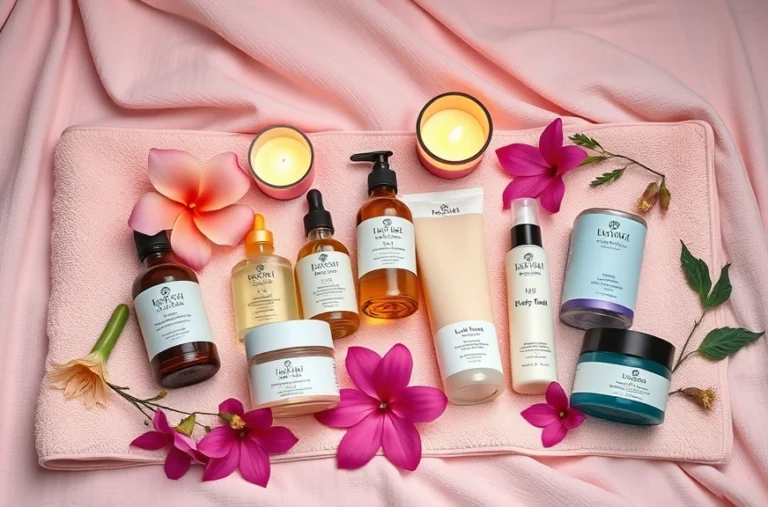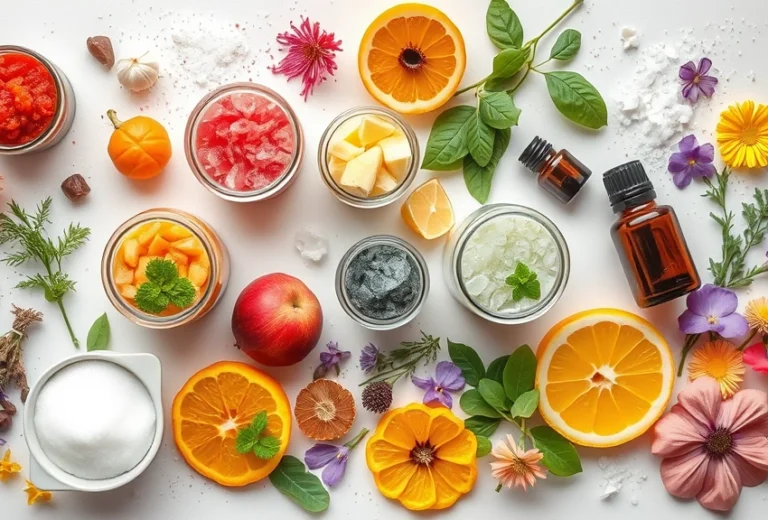This Is Exactly How to Build a Basic Skin Care Routine for Beginners
Starting a skincare routine can feel like stepping into a new world full of complicated terms, shelves of products, and conflicting advice. If you’re new to skincare, it’s totally normal to feel overwhelmed. The good news? A basic skincare routine for beginners doesn’t have to be complicated—or expensive. The key is to focus on a few essential steps, stay consistent, and give your skin some time to adjust and show results.
This simple guide will walk you through everything you need to know to get started. By the end, you’ll have the confidence to build a routine that works for your skin and keeps it looking and feeling its best.
Step-by-Step Guide to a Basic Routine
A simple skincare routine typically includes three essential steps you’ll do twice a day—cleanse, moisturize, and (in the morning) apply sunscreen. Depending on your specific skin concerns, you can add extras like treatments later. Here’s how to get started.
Step 1: Cleanser
Cleansing is your first and most important step. It clears away dirt, oil, makeup, and other debris that build up on your skin throughout the day or night. Think of it as giving your skin a fresh slate.
- Why it’s important: A clean surface ensures other products can work better and helps prevent clogged pores and breakouts.
- How to choose one: Match your cleanser to your skin type:
- Oily skin: Opt for a gentle foaming or gel cleanser to remove excess oil without stripping your skin.
- Dry or sensitive skin: Go for hydrating, non-foaming cleansers that clean without over-drying.
Product recommendations:
- CeraVe Hydrating Cleanser (great for dry skin and sensitive types).
- La Roche-Posay Toleriane Purifying Cleanser (suitable for oily and combination skin).
Pro tip: Always wash your face with lukewarm water—hot water can be too harsh and strip your skin of natural oils.
Step 2: Moisturizer
Once your skin is clean, it’s time to give it some moisture. Even if you have oily skin, don’t skip this step! A moisturizer locks in hydration and helps maintain a healthy skin barrier.
- Why it’s important: Hydrated skin looks healthier, feels softer, and is less likely to overproduce oil (a common issue for oily skin types).
- How to choose one:
- For oily skin, lightweight gel-based formulas work well.
- For dry skin, rich cream-based moisturizers are your best bet.
Product recommendations:
- Neutrogena Hydro Boost Gel Cream (gel-based, perfect for oily or combination skin).
- Eucerin Advanced Repair Cream (cream-based, intensely hydrating for dry skin).
Pro tip: Apply moisturizer while your skin is still slightly damp from cleansing—it helps lock in water for extra hydration.
Step 3: Sunscreen (AM Only)
Sunscreen is a non-negotiable step every morning, no matter the weather or season. UV damage is the leading cause of premature skin aging, wrinkles, and even skin cancer—so daily protection is essential.
- Why it’s important: Sunscreen shields your skin from harmful UV rays that break down collagen, create dark spots, and cause long-term damage.
- What to look for:
- Choose a broad-spectrum sunscreen with at least SPF 30 for daily use.
- Some sunscreens are mattifying (great for oily skin) or hydrating (better for dry skin).
Product recommendations:
- EltaMD UV Clear Broad-Spectrum SPF 46 (lightweight, good for sensitive or acne-prone skin).
- Supergoop! Unseen Sunscreen SPF 40 (weightless and invisible under makeup).
Pro tip: Reapply sunscreen every two hours if you’re spending time outdoors.
Optional Step: Treatments (PM Only)
Once you’re comfortable with the basics, you can consider adding a treatment product in the evening to target specific concerns, like acne, dark spots, or fine lines. Start slow—using too many actives at once can irritate your skin.
The most common treatments for beginners include:
- Retinol: For anti-aging and acne (start with a low concentration like The Ordinary Retinol 0.2% in Squalane).
- Salicylic Acid: For oily, acne-prone skin (Paula’s Choice 2% BHA Liquid Exfoliant is a cult favorite).
- Vitamin C: For brightening and evening out skin tone.
Pro tip: If using active ingredients like retinol or acids, apply sunscreen diligently in the morning—they can make your skin more sensitive to the sun.
How to Customize Your Routine
Once you’ve nailed your simple skincare guide, you can customize it further based on your skin’s needs.
Identify Your Skin Type
Knowing your skin type will guide your choices. Here are the common skin types and their characteristics:
- Oily skin: Your face feels shiny or greasy, especially in the T-zone (forehead, nose, chin).
- Dry skin: You experience flakiness, tightness, or rough patches.
- Combination skin: Oily in some areas (like the T-zone) and dry in others.
- Sensitive skin: Easily reacts to products (redness, irritation, or stinging).
When to Add Products
Once your basic routine feels effortless, you can consider adding extras like:
- Serums: For extra hydration (try a hyaluronic acid serum) or targeted treatments (e.g., niacinamide for redness).
- Exfoliators: For smoother skin and unclogged pores (look for chemical exfoliants like glycolic or lactic acid—use just 1–2 times a week).
Always patch-test new products to ensure they don’t irritate your skin.
Common Beginner Mistakes to Avoid
Starting strong means knowing what not to do. Here are some common mistakes beginners often make and how you can avoid them:
- Skipping sunscreen: Not using sunscreen daily will undo all the progress you’re trying to make (yes, even if it’s cloudy).
- Trying too many products at once: Stick to the basics first—throwing multiple new treatments at your skin can irritate or overwhelm it.
- Over-washing or over-exfoliating: Cleansing too often or using harsh scrubs can strip your skin, leaving it dry and irritated. Stick to gentle products and routines.
Conclusion
Creating a basic skincare routine for beginners doesn’t have to be complicated or intimidating. Start with three essential steps—cleanse, moisturize, and sunscreen—and make them a daily habit. Once you’ve built that foundation, you can gradually add products like treatments or serums as you understand your skin better.
Remember, skincare is a marathon, not a sprint. The key to healthy skin is simplicity, consistency, and patience. Start small, stay consistent, and give your skin the time it needs to show its progress.
Now, go ahead and give it a try—your skin will thank you!







